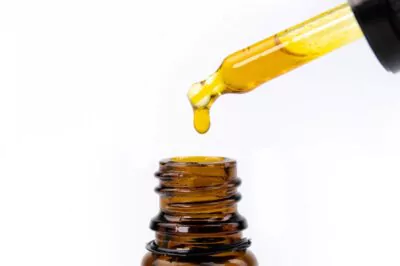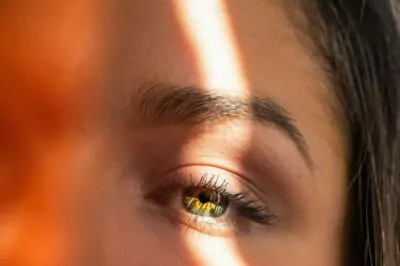Table of Contents[Hide][Show]
Fact: Acne is not just a teenage skin condition and the numbers don’t like. Approximately 50 million Americans are touched by acne each year, making it the most common skin condition in the United States. Acne can occur during any life stage. Statistics suggest that the adult version is on the rise. These reasons typically have to do with stress, lifestyle, and fluctuating hormone levels.
Yearly medical costs for treatment hover around 1.2 billion dollars on an annual basis. So it’s no surprise that the over-the-counter skin care market continues to make advances in this area.
One of the most buzzed about products on the market recently is microneedle patches. This is not to be confused with microneedling, an in-office treatment that’s been on the beauty scene for quite some time. While anything involving the word “needle” sounds a bit intimidating, it’s actually pain-free and just may be the acne treatment you need to get your skin back in tip-top shape.
History Of transdermal patches & microneedling
Before getting into how microneedle patches work, let’s take a look at the origins behind the two components they encompass: transdermal patches and microneedling.
Transdermal patches
While the transdermal method is a relatively new beauty innovation, the technology has been used in the medical industry for centuries, but more modern-day uses include serving as a catalyst to deliver insulin into the blood of diabetic patients, Scopolamine (hyoscine) patch for the treatment of motion sickness (the first transdermal patch to hit the market), an aid to wean smokers off of nicotine (aka “the patch”), nitroglycerin patches for angina pectoris, transdermal oestradiol for female hormone replacement therapy, pain patches, and many more.
Microneedling
This treatment has been popping up in medi-spas over the past few years, but it’s far from being a nouveau procedure. Its origins date back to 100 BC when it was used in Ancient Asia. It was deemed as the first proven use of acupuncture.
While traditional acupuncture is meant to open channels to allow the flow of Qi (vital energy), improve body function, and promote natural self-healing, microneedling involves using a roller with extremely fine, short needles to create imperceptible punctures in the skin that encourage cell regeneration, collagen production, and the reduction of acne by triggering your skin’s self-defense mode.
Topical products such as vitamin C and hyaluronic acid are applied immediately after the treatment. This is because the absorbance at this time is higher than normal, thus increasing their effectiveness.
Microneedle patches for acne—how do they work?
To be clear, microneedle patches don’t actually contain real needles. Rather, they have ingredients and dissolving microneedles that mimic the true microneedling procedure. Upon application, the faux microneedles make miniscule little pricks and penetrate the top two layers of your skin. You’re apt to feel a cooling, tingling sensation, but nothing that’s even close to bringing you to tears.
Over a period of approximately two hours, the active ingredients (think salicylic acid, tea tree oil…) will continue to pervade into your skin in an effort to treat a pimple before it reaches the surface. As aforementioned, this is why these types of patches work best for deep pimples.
Microneedle benefits
The benefit of such a product is that the “needles” make it possible for the active ingredients to be delivered deeper into the dermis than a traditional topical product. Not to mention, purchasing some patches versus heading to a medi-spa is easier on both your wallet, as well as your psyche.
How long does it take to see results?
The best time to wear microneedle patches for acne is when you’re sleeping—even putting them on before you go to sleep is a great idea, because the longer it can stay on your skin, the better as it will give the active ingredients ample time to penetrate your skin.
Everyone’s skin condition is different. So it is hard to pinpoint an exact target for when you’ll see results, but many people see a change after the first use. For patches that have nothing to do with treating acne, say for instance, “plumping” patches, some individuals see a change within 20 minutes. These products are more of a “pick-me-up” before a special occasion or event. The acne micropatches are designed to treat the problem at-hand.
Why try microneedle patches versus other acne treatments?
Unlike other acne treatments, microneedle patches aren’t drying or irritating. They work on a deeper level to treat the pimple before it gets out of control. Of course, you can always use these patches with gentle DIY acne treatments as well.
Perhaps the only drawback is that they can be more expensive than other creams and topicals. Though you won’t need to purchase it as often if the condition can be controlled. On the low end, you can find patches for around $12. (There are typically several patches to a pack). It’s not uncommon to find more sophisticated versions (a greater concentration of ingredients) in the $40-plus range, too.
Not all patches are alike
To be clear, there are a number of “pimple patches” on the market, but not all of them are microneedle patches. Some are merely a medicated adhesive. This is important because some patches treat certain types of acne better than others. For example:
Medicated patches
Medicated patches for papules, pustules, nodular or cystic acne.
Action: Kills bacteria and soothes inflammation of active acne with ingredients such as tea tree oil and salicylic acid.
Non-medicated patches
These are used for small pimples, whiteheads
Action: Accelerate the healing process and prevent further infection.
Microneedle patches
These patches are used on deep nodular or cystic acne
Action: Help deliver active ingredients to a deeper layer of the skin to treat a more chronic acneic condition.
When to consider a real microneedling treatment
If you’ve been a life-long acne sufferer and have the scars to prove it, you may want to consider getting a real microneedling treatment. It may soften the appearance of depressed and/or ice pick scars—but not raised scars.
If they are raised it means you already have excess collagen in the area, so a microneedling treatment would be counterproductive since one of the effects is stimulated collagen production.
Studies suggest that a patient will see better results from treatment when it’s combined with vitamin C or PRP—platelet-rich-plasma. Other positive points about microneedling is that it’s safe for darker skin tones, as well as thin and sensitive skin types.
Sources:
“Skin Conditions By Numbers,” American Academy of Dermatology Association,
https://www.aad.org/media/stats/conditions/skin-conditions-by-the-numbers
“Transdermal Patches: History, Development and Pharmacology,” March 18, 2015,
https://www.ncbi.nlm.nih.gov/pmc/articles/PMC4403087/
“Can I Treat Acne Scars With Microneedling?,” February 21, 2019, https://www.healthline.com/health/microneedling-for-acne-scars#side-effects









Leave a Reply